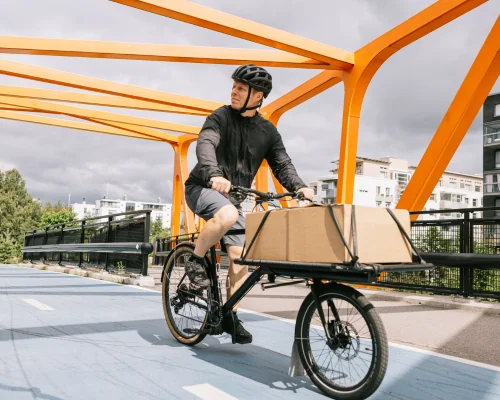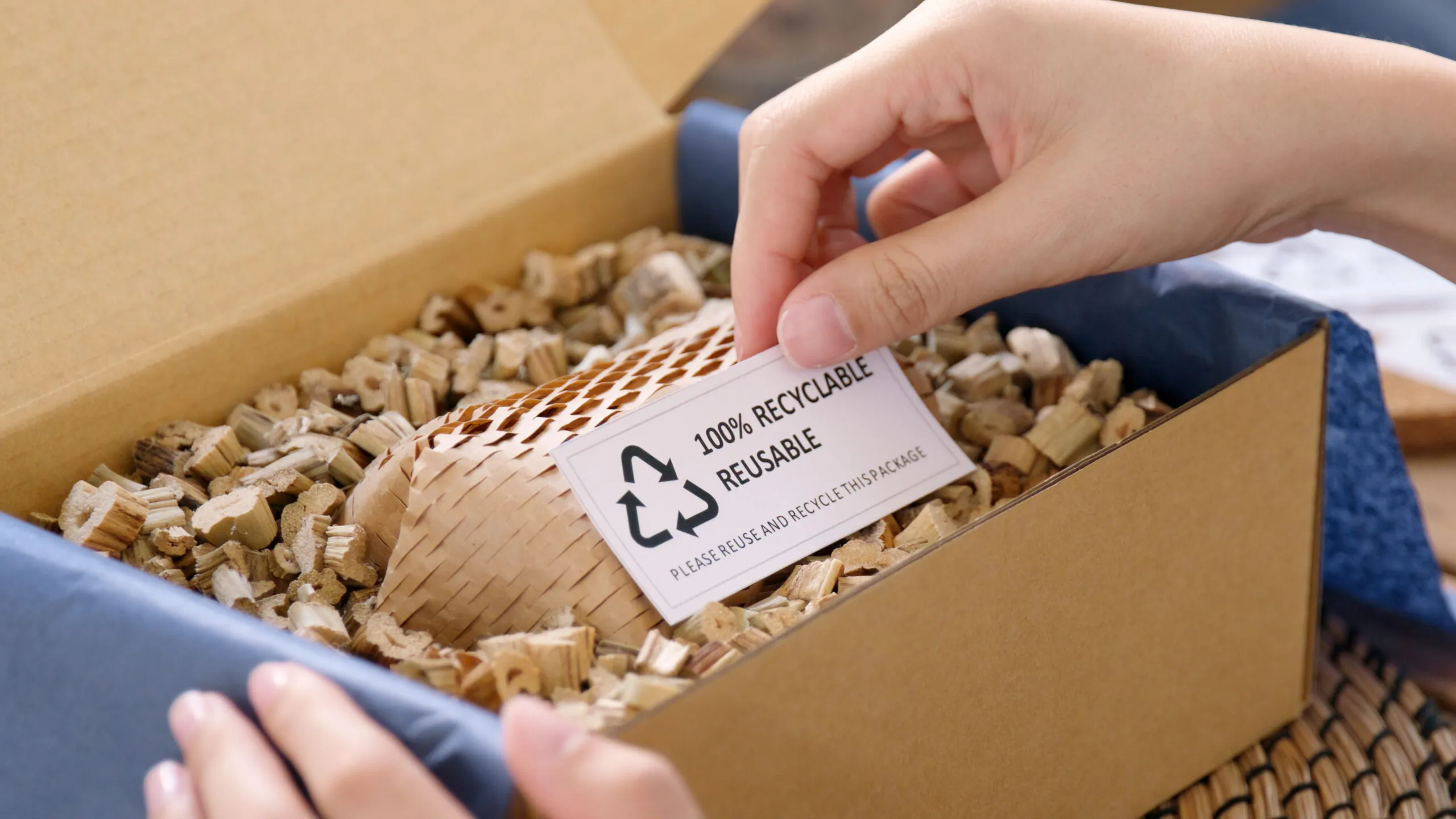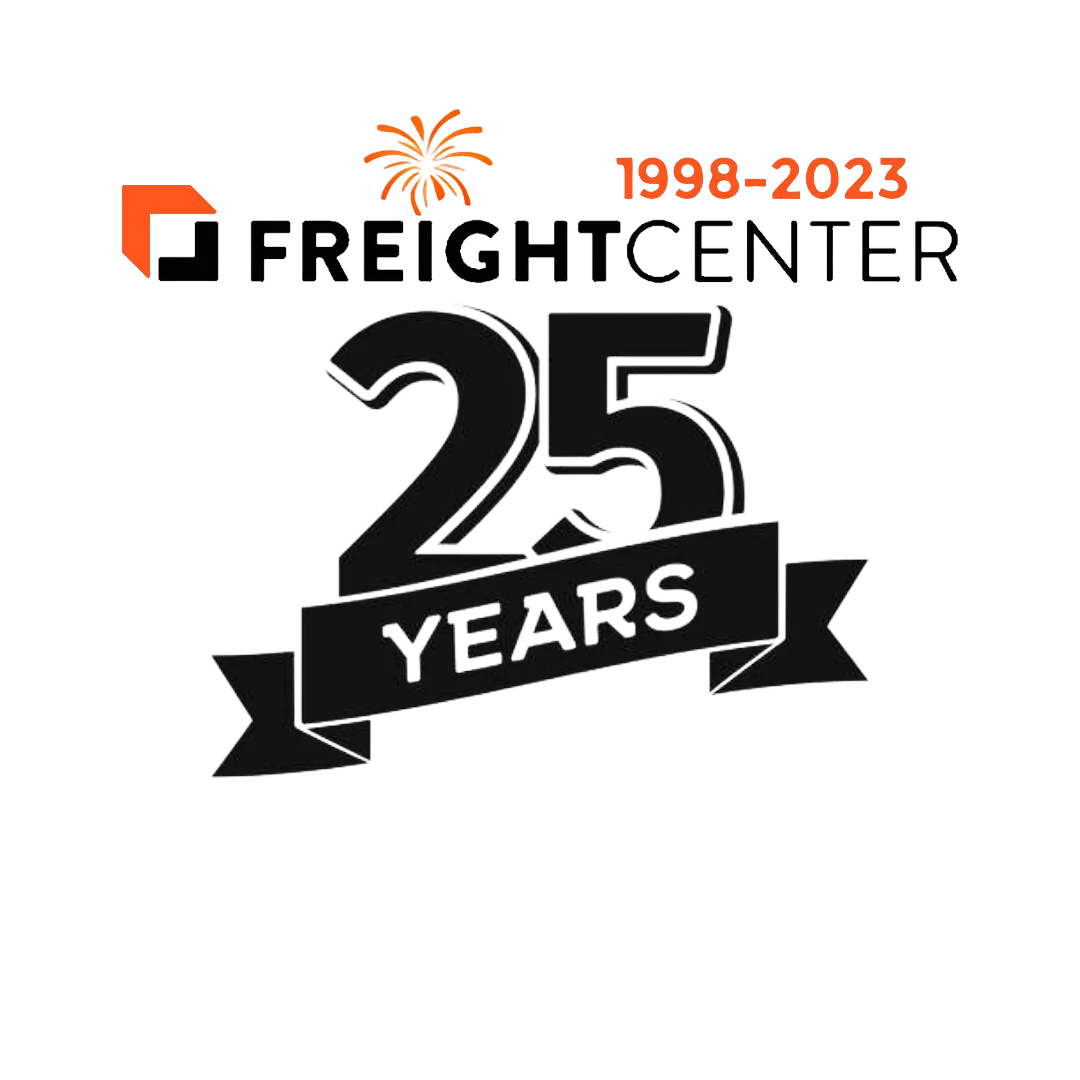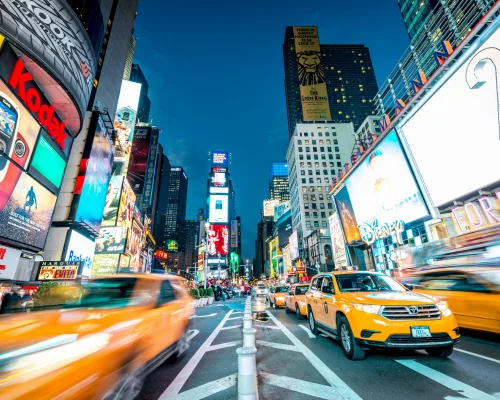Amidst the towering skyscrapers, bustling streets, and the ceaseless hum of activity, urban centers are the lifeblood of commerce and culture. We navigate the labyrinthine challenges freight companies face to keep goods moving efficiently, sustainably, and harmoniously with the city’s pulse. Urban life pulsates with energy but also throbs with its unique logistical hurdles.
These challenges often begin with congestion — a ubiquitous feature of city life. The snarl of traffic, the labyrinth of narrow streets, and a constant stream of pedestrians can swiftly transform a straightforward delivery into a logistical nightmare. In this comprehensive exploration, we delve deep into the intricacies of urban freight transportation
In this urban realm, environmental considerations also weigh heavily. As vibrant as they are, cities are often acutely aware of their environmental impact. Hence, freight companies operating within them must grapple with stringent emissions regulations. The pursuit of cleaner, more sustainable transportation methods becomes imperative.
However, this exploration takes us beyond the challenges and dives deep into the innovative solutions shaping the future of urban freight transportation. From intelligent routing and micro-distribution centers to electric vehicles and eco-friendly packaging, freight companies are pioneering change in the urban landscape. They’re not just overcoming obstacles; they’re rewriting the game’s rules, ensuring that the goods we rely on reach us efficiently, sustainably, and seamlessly within the city that never sleeps.
Join us on a journey through the urban jungle, where each challenge is an opportunity for innovation, and each solution brings us closer to a future of more efficient, eco-conscious, and interconnected urban freight transportation. Welcome to the world of urban logistics, where the rhythm of the city and the pulse of commerce meet, ensuring that goods flow seamlessly through the veins of the metropolis.”
The Urban Challenge: A Complex Web of Logistics
The labyrinthine challenges freight companies face in densely populated urban areas are akin to navigating a complex logistics web. In the city’s heart, where life moves at an accelerated pace, every delivery is a puzzle piece in an intricate urban grid. Let’s delve deeper into these multifaceted challenges:

Urban Congestion: The Unyielding Foe
Urban congestion is one of the most conspicuous adversaries of freight companies in these bustling locales. The snarl of traffic, the labyrinth of narrow streets, and the ceaseless flow of pedestrians can swiftly transform a straightforward delivery into a logistical nightmare. Each traffic light becomes a potential bottleneck, making every intersection a puzzle. Urban congestion doesn’t merely lead to delays; it elevates the risk of accidents and possible damage to valuable cargo.
Parking Predicaments: The Quest for Elusive Spaces
Finding suitable parking spaces in densely populated cities resembles a treasure hunt, where ‘X’ marks the elusive spot. Loading and unloading zones are limited in number, and competition for available spaces is often nothing short of fierce. This translates into added time and costs for drivers as they circle blocks in a seemingly endless quest for a suitable parking spot. The hunt for parking exacerbates traffic congestion, further complicating the intricate web of urban logistics.
The Last-Mile Mystery: The Urban Maze
The enigmatic “last mile” challenge is a puzzle that freight companies must solve daily in urban freight transportation. It revolves around efficiently delivering goods from central distribution hubs to their ultimate destinations — often residences or small businesses within the urban landscape. The complexity here arises from the need to navigate narrow streets, towering apartment buildings, and stringent security protocols, all of which add layers of intricacy to the final leg of the journey. Although the shortest in distance, the last mile can often be the longest in time and effort.
Emissions and Environmental Impact: The Green Imperative
Operating in urban areas frequently entails dealing with stringent emissions regulations and environmental considerations. As cities become increasingly eco-conscious, freight companies must adapt. The environmental impact of operations is under scrutiny, necessitating the adoption of greener, more sustainable transportation methods. The shift towards cleaner and more eco-friendly options is imperative to comply with regulations and contribute to improved air quality in urban centers.
The urban challenge is a multifaceted logistics web where congestion, parking, the last mile, and environmental concerns intersect. Freight companies operating in densely populated urban areas must master navigating this complex terrain. However, it’s not just about overcoming challenges; it’s about reimagining urban logistics and finding innovative solutions that transform these obstacles into opportunities.
Innovations In Urban Freight Transportation
In the ever-evolving landscape of urban freight transportation, innovation has emerged as the driving force that propels the industry toward a more efficient and sustainable future. In densely populated urban areas, where challenges often seem impossible, the spirit of innovation lights the way and leads to groundbreaking solutions. Let’s embark on a journey through the latest innovations that are reshaping the urban freight landscape:
Intelligent Routing: Navigating the Urban Maze
In urban logistics, precision is key, and intelligent routing has emerged as a game-changer. Advanced routing algorithms harness the power of real-time data, including traffic patterns, road closures, and weather conditions, to chart the most efficient course for deliveries. By dynamically adjusting routes, these systems help circumvent congestion and bottlenecks, ensuring that goods move swiftly through the urban maze. The result is reduced delivery times and decreased environmental impact through reduced fuel consumption.
Micro-Distribution Centers: Bringing Goods Closer to the Consumer
One of the most innovative solutions to the last-mile challenge is the proliferation of micro-distribution centers strategically positioned throughout urban areas. These compact hubs act as a bridge between central distribution centers and the end consumer. Micro-distribution centers minimize the complexity of navigating densely populated neighborhoods by storing goods closer to their final destinations. This approach reduces delivery times and offers the potential for eco-friendly delivery methods, such as electric cargo bikes.
Electric Vehicles: The Green Revolution in Urban Freight
Electric vehicles (EVs) have taken center stage in the quest for sustainable urban freight transportation. EVs are quieter, produce zero tailpipe emissions, and offer lower operating costs than traditional gasoline-powered counterparts. Many urban freight companies are electrifying their fleets, heralding a green revolution in city logistics. Moreover, innovations in EV technology are extending the range and payload capacity of electric cargo vehicles, making them more viable options for urban deliveries.
Eco-Friendly Packaging: Reducing Environmental Footprints
Sustainability extends beyond vehicles and routes; it encompasses the packaging of our goods. Eco-friendly packaging materials, such as biodegradable plastics and recyclable cardboard, are gaining traction. These materials reduce the environmental footprint of urban freight by minimizing waste and lowering disposal costs. Additionally, innovative packaging designs are being engineered to maximize space utilization, optimizing the capacity of delivery vehicles.
Collaborative Platforms: The Sharing Economy in Freight
The sharing economy has made its mark on urban freight transportation through collaborative platforms that connect shippers with available carriers. These platforms facilitate the efficient use of cargo space by matching shipments with underutilized capacity on existing delivery routes, such as LTL & PTL. By minimizing empty cargo space and reducing the number of vehicles on the road, collaborative platforms contribute to decreased congestion and emissions in urban areas.
Innovation is not a mere buzzword in urban freight transportation; it’s a necessity. As urban centers grow and evolve, so must the methods used to move goods within them. The innovations mentioned here represent a glimpse into the industry’s transformative changes. They are the building blocks of a more efficient, sustainable, and interconnected urban freight landscape.

Challenges and Solutions in Sustainability
The urban freight landscape is increasingly defined by its dual challenge: the growing demand for goods in densely populated areas and the need to minimize the environmental impact of transportation. Innovative solutions are emerging as the keys to sustainability in this intricate balancing act. Let’s dive into the challenges and the pioneering solutions that promise a more sustainable future for urban freight:
Traffic Congestion: Navigating the Gridlock
The lifeblood of urban areas, traffic congestion, poses a significant challenge to sustainable freight operations. The snarl of vehicles on city streets leads to delays and contributes to higher emissions. Innovative approaches like off-peak deliveries and congestion pricing are gaining traction. These strategies encourage deliveries during less congested hours and promote alternative transportation modes, ultimately reducing traffic and emissions.
Emissions Reduction: Electrifying the Fleet
Reducing the carbon footprint of urban freight is paramount in sustainability efforts. Adopting electric vehicles (EVs) is a transformative step in this direction. Electric delivery vans, trucks, and cargo bikes are becoming increasingly common in urban fleets. These EVs produce zero tailpipe emissions and offer quieter operation, making them suitable for deliveries in noise-sensitive areas.
Alternative Fuels: Diversifying the Energy Mix
In the quest for greener urban freight, alternative fuels are gaining prominence. Natural gas, hydrogen, and biofuels are becoming viable options, providing lower emission profiles than traditional gasoline or diesel. Furthermore, some urban areas invest in alternative fuel infrastructure, facilitating the transition to cleaner energy sources.
Efficient Routing: Technology’s Role
Intelligent routing and navigation systems are indispensable tools in the pursuit of sustainability. These technologies optimize delivery routes, considering traffic, road closures, and delivery windows. They reduce emissions and improve delivery efficiency by minimizing inefficient ways and idle time.
Micro-Distribution Centers: The Last-Mile Revolution
The proliferation of micro-distribution centers is transforming the last mile of urban freight. These localized hubs reduce the distance goods travel, leading to shorter delivery routes and decreased emissions. Micro-distribution centers often employ eco-friendly delivery methods, such as electric cargo bikes, to minimize their environmental impact.

Sustainable Packaging: From Cradle to Grave
Eco-friendly packaging materials and designs are increasingly shaping the sustainability of urban freight. Biodegradable plastics, recyclable cardboard, and reduced packaging waste contribute to a greener supply chain. Innovations in packaging also focus on space optimization within delivery vehicles, ensuring that cargo space is used efficiently.
The challenges in urban freight sustainability are real and complex, but the solutions are equally dynamic and transformative. It’s a journey where cities and the freight industry must collaborate to create a harmonious balance between urban living and responsible commerce. As cities evolve, so too must their approaches to urban freight. These innovative solutions represent the compass guiding urban freight toward a future where goods flow seamlessly, sustainably, and harmoniously through the urban landscape.
Sustainable Partners For Future Urban Freighting
|
From the labyrinthine streets of city centers to the quiet neighborhoods on the outskirts, urban freight is evolving. It’s evolving into a more efficient, eco-friendly, and community-conscious endeavor. With technology, urban planning, and a shared commitment to sustainability as our allies, FreightCenter is helping shape a future where goods move seamlessly and harmoniously through urban spaces. The progress made in sustainability across urban freight extends beyond reducing congestion and emissions; it’s a commitment to building cleaner, quieter, and more livable cities. It’s an acknowledgment that urban life and commerce can coexist in harmony. FreightCenter promises to future generations that the relentless pace of urban life won’t come at the cost of our environment or the tranquility of our neighborhoods.
As we look ahead, it’s with a sense of optimism. The challenges are significant but matched by the determination of urban planners, freight companies, and city dwellers to pave the way for a more sustainable tomorrow. It’s a future where the humming of electric vehicles replaces the roar of diesel engines, efficient use of technology reduces congestion, and eco-friendly packaging becomes the norm. FreightCenter will continue to chart the course toward a sustainable and seamless urban freight future. Together, we’re transforming the urban jungle into a place where goods flow freely, the environment thrives, and communities flourish. |
 |

